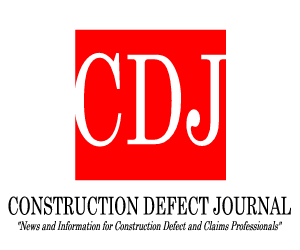
This article describes what constructive eviction is and to suggest what owners and managers can do to prepare for, and ward off, such claims.
Inevitably, commercial property owners and managers will be faced with a claim by a tenant of constructive eviction. This article is intended to describe what constructive eviction is and to suggest what owners and managers can do to prepare for, and ward off, such claims.
Constructive eviction occurs where a tenant’s “right of possession and enjoyment” of the leasehold is disrupted by the landlord in a manner that renders the premises “unsuitable for the purposes intended.”i Put another way, it is interference that is so “substantial nature and so injurious as to deprive the tenant of the beneficial enjoyment of a part or the whole of the demised premises.”ii Although easy to describe in theory, constructive eviction can be devilishly difficult to determine in the real world. In litigation, determining when interference crosses over the line to constructive eviction is intensely fact-sensitive and resists sweeping generalizations.iii
For instance, Utah courts have held that tenants have been constructively evicted when they have been subjected to continual harassment or insults by the landlord or the landlord’s agent,iv prevented or impaired in their access to the leased premises during operating hours,v or when a landlord fails to provide an operable elevator (or other essential commercial amenities) necessary for a tenant’s business operations.vi By contrast, claims of “discomfort” or “inconvenience” have been rejected as a basis for constructive eviction.vii The same goes for claims that a landlord wrongfully served a three-day notice to pay or quit.viii
Generally, constructive eviction is an affirmative defense made in response to a landlord’s lawsuit for nonpayment of rent.ix It is not, as is commonly supposed, a basis for a tenant’s premature abandonment of the premises. In other words, the defense is raised after the tenant has vacated as a result of being effectively “evicted.”x Further, the defense requires the tenant to actually abandon the premises and do so within a “reasonable time” after the alleged interference.xi A tenant cannot stay in possession and simply refuse to pay rent on the basis of constructive eviction.xii
The key consideration in preparing for, and responding to, a claim of constructive eviction is keeping good records. A tenant claiming constructive evicting likely must prove that the issue was raised in a timely manner and, despite multiple entreaties, was never resolved.xiii As such, it is critical that landlords acknowledge tenant complaints as well as document in writing their efforts to ameliorate those complaints. While a landlord does not carry the burden of proof for constructive eviction, detailed documentation can thwart a tenant’s claim that a landlord has been inattentive or unwilling to address the tenant’s concerns.
Detailed records are also useful in disputes where a tenant claims substantial interference. “The whole point of constructive eviction is that the landlord basically drove the tenant out through the landlord’s action or inaction.”xiv As such, a landlord that is unable to document the steps taken in response to complaints will be grossly disadvantaged whereas the tenant, which had control and knowledge of the premises, will have a much easier time describing how the alleged interference deprived them of enjoying the premises.
Even with meticulous records, however, owners and managers may still face claims of construction eviction. In such instances, counsel should be retained to properly advise on compiling, preserving, and employing the evidence necessary to refute the tenant’s claims.
i Gray v. Oxford Worldwide Grp., Inc., 139 P.3d 267, 269 (Utah Ct. App. 2006).
ii Gray, 139 P.3d at 270 (citing Neslen, 254 P.2d at 850) (internal formatting omitted).
iii See Gray, 139 P.3d at 269–70 (citing Thirteenth & Washington Sts. Corp. v. Neslen, 254 P.2d 847, 850 (Utah 1953)); Brugger v. Fonoti, 645 P.2d 647, 648 (Utah 1982).
iv See Gray, 139 P.3d at 270–71.
v Thirteenth & Washington Sts. Corp. v. Neslen, 254 P.2d 847 (Utah 1953).
vi See Richard Barton Enterprises, Inc. v. Tsern, 928 P.2d 368, 375, 378 (Utah 1996) (citing Union City Union Suit Co. v. Miller, 162 A.D.2d 101, 556 N.Y.S.2d 864 (1990)).
vii See Myrah v. Campbell, 163 P.3d 679, 682–84 (Utah Ct. App. 2007).
viii Barton v. MTB Enterprises, 889 P.2d 476, 477 (Utah Ct. App. 1995); see also Brugger, 645 P.2d at 648 (stating that the tenant’s complaints revolved around standard problems commonly associated with building maintenance and did not rise to the level of substantial interference); viv Reid v. Mutual of Omaha Ins. Co., 776 P.2d 896, 898–900 (Utah 1989) (upholding trial court’s findings of fact concerning insufficiency of disruption so as to justify claim for constructive eviction).
ix See Kenyon v. Regan, 826 P.2d 140, 142 (Utah Ct. App. 1992).
x See Kenyon, 826 P.2d at 142.
xi See Kenyon, 826 P.2d at 142; see also Barton v. MTB Enterprises, Inc., 889 P.2d 476, 477 (Utah Ct. App. 1995); Brugger, 645 P.2d at 648.
xii See Kenyon, 826 P.2d at 142 (citing Fernandez v. Purdue, 518 P.2d 684, 686 (Utah 1974)).
xiii See Brugger, 645 P.2d at 648 (noting that while the tenant had raised legitimate issues concerning state of the premises, the landorld had taken steps to remedy the problems within a reasonable time) (citing 49 Am.Jur.2d, Landlord and Tenant, § 617).
xiv Barton, 889 P.2d at 477.
Reprinted courtesy of Ben T. Welch, Snell & Wilmer and Ken Brown, Snell & Wilmer
Mr. Welch may be contacted at bwelch@swlaw.com




